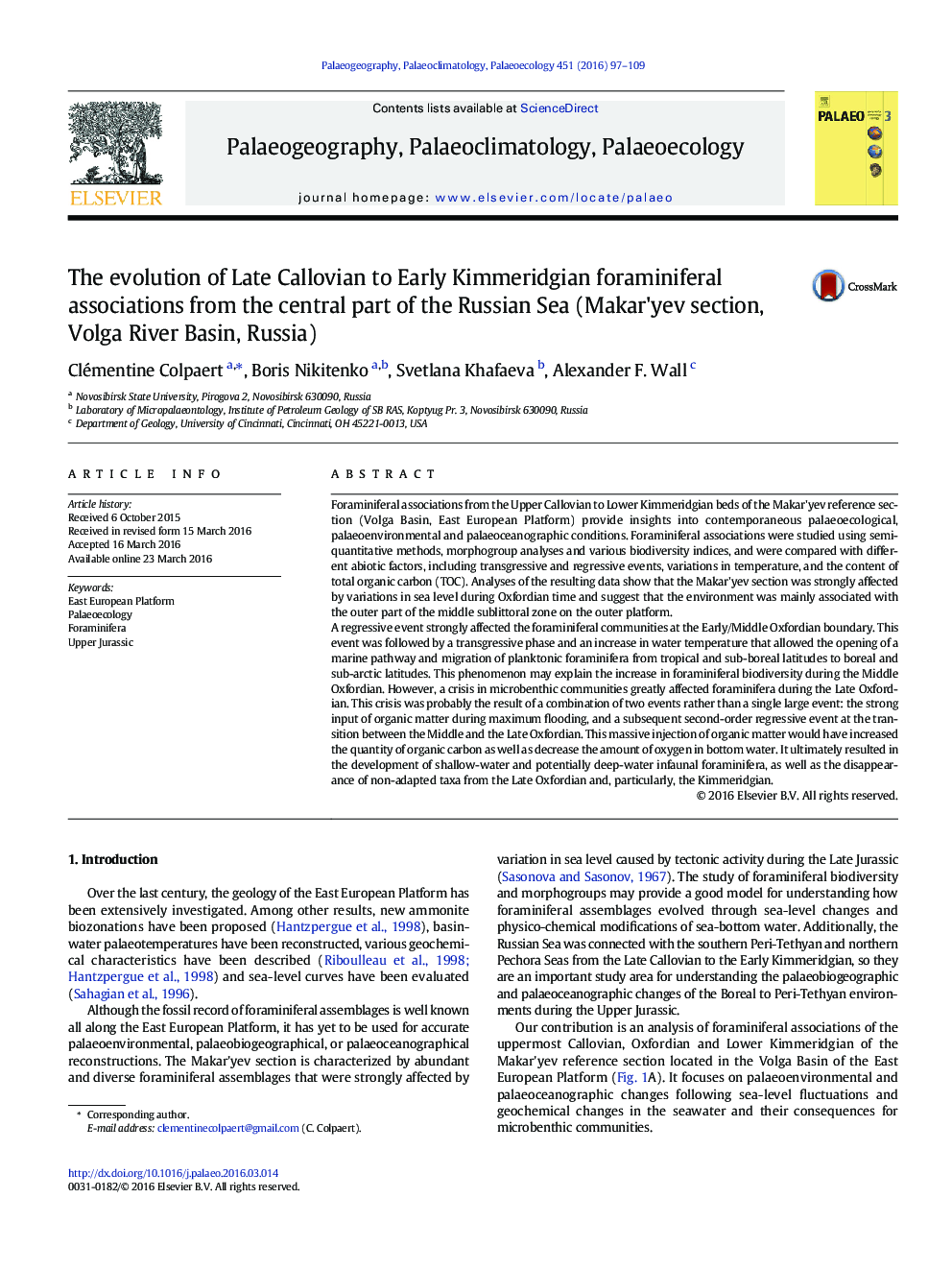| کد مقاله | کد نشریه | سال انتشار | مقاله انگلیسی | نسخه تمام متن |
|---|---|---|---|---|
| 4465719 | 1622140 | 2016 | 13 صفحه PDF | دانلود رایگان |
• We examine foraminiferal associations for palaeoecological reconstructions.
• We establish five ecological levels based on foraminiferal communities.
• We illustrate variations of the sea level and the impact of this crisis on foraminiferal associations.
Foraminiferal associations from the Upper Callovian to Lower Kimmeridgian beds of the Makar'yev reference section (Volga Basin, East European Platform) provide insights into contemporaneous palaeoecological, palaeoenvironmental and palaeoceanographic conditions. Foraminiferal associations were studied using semi-quantitative methods, morphogroup analyses and various biodiversity indices, and were compared with different abiotic factors, including transgressive and regressive events, variations in temperature, and the content of total organic carbon (TOC). Analyses of the resulting data show that the Makar'yev section was strongly affected by variations in sea level during Oxfordian time and suggest that the environment was mainly associated with the outer part of the middle sublittoral zone on the outer platform.A regressive event strongly affected the foraminiferal communities at the Early/Middle Oxfordian boundary. This event was followed by a transgressive phase and an increase in water temperature that allowed the opening of a marine pathway and migration of planktonic foraminifera from tropical and sub-boreal latitudes to boreal and sub-arctic latitudes. This phenomenon may explain the increase in foraminiferal biodiversity during the Middle Oxfordian. However, a crisis in microbenthic communities greatly affected foraminifera during the Late Oxfordian. This crisis was probably the result of a combination of two events rather than a single large event: the strong input of organic matter during maximum flooding, and a subsequent second-order regressive event at the transition between the Middle and the Late Oxfordian. This massive injection of organic matter would have increased the quantity of organic carbon as well as decrease the amount of oxygen in bottom water. It ultimately resulted in the development of shallow-water and potentially deep-water infaunal foraminifera, as well as the disappearance of non-adapted taxa from the Late Oxfordian and, particularly, the Kimmeridgian.
Journal: Palaeogeography, Palaeoclimatology, Palaeoecology - Volume 451, 1 June 2016, Pages 97–109
